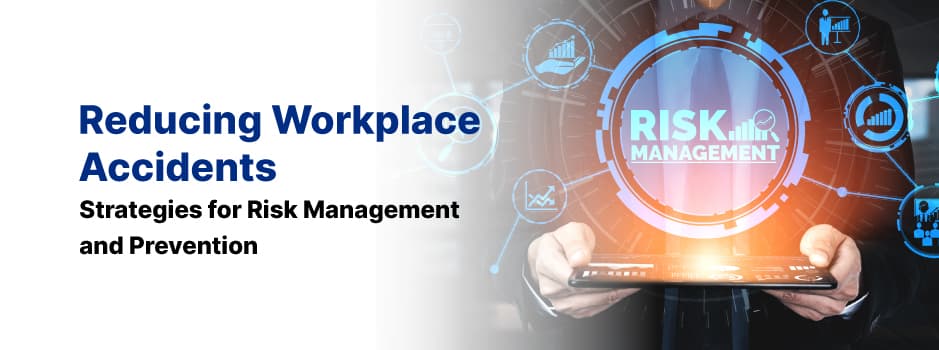Introduction
Workplace accidents can have a significant impact on employee health and well-being, as well as on an organization's productivity and bottom line. By implementing effective risk management and prevention strategies, employers can reduce the likelihood of accidents and create a safer work environment for all. In this comprehensive guide, we will discuss the importance of accident prevention, key risk management strategies, and practical tips for reducing workplace accidents and fostering a strong safety culture.
Section 1: The Importance of Accident Prevention
1.1 Why Accident Prevention Matters
Accident prevention is essential for a variety of reasons, including:
- Protecting the health and well-being of employees
- Reducing lost work time and productivity due to accidents
- Minimizing the costs associated with workers' compensation and medical expenses
- Maintaining compliance with safety regulations and industry standards
- Enhancing an organization's reputation as a safe and responsible employer
1.2 The Role of Risk Management in Accident Prevention
Risk management is a proactive approach to identifying, assessing, and controlling workplace hazards before they result in accidents or injuries. By implementing effective risk management strategies, organizations can:
- Improve their understanding of potential hazards and the associated risks
- Prioritize safety initiatives and allocate resources more effectively
- Develop and implement targeted prevention measures
- Monitor and evaluate the effectiveness of their safety efforts
- Foster a strong safety culture that supports ongoing improvement
Section 2: Key Strategies for Risk Management and Accident Prevention
2.1 Conduct a Comprehensive Hazard Assessment
Perform a thorough hazard assessment of your workplace to identify potential hazards and assess the associated risks. This assessment should consider factors such as the type, frequency, and severity of hazards, as well as any specific regulations or industry standards that apply to your work environment. Regularly update your hazard assessment to account for changes in equipment, processes, or personnel.
2.2 Implement Hazard Controls
Based on your hazard assessment, develop and implement hazard controls to reduce the likelihood of accidents. These controls may include:
- Engineering controls, such as redesigning equipment or processes to eliminate or minimize hazards
- Administrative controls, such as implementing safety policies and procedures, providing training, or rotating workers to limit exposure to hazards
- Personal protective equipment (PPE), such as gloves, safety glasses, or respirators, to protect workers from hazards that cannot be eliminated or controlled through other means
2.3 Establish a Safety Training Program
Provide comprehensive safety training for all employees, covering topics such as hazard recognition, safe work practices, and the proper use of PPE. Ensure that employees receive initial training when they start a new job or task, as well as refresher training periodically or as needed based on changes in the workplace or regulations.
2.4 Create a Reporting System for Accidents and Near Misses
Encourage employees to report accidents, near misses, and safety concerns promptly and without fear of retaliation. Establish a system for tracking and analyzing this information to identify trends, uncover underlying causes, and develop targeted prevention measures.
2.5 Foster a Strong Safety Culture
Cultivate a safety culture that values and prioritizes accident prevention at all levels of the organization. This includes:
- Demonstrating management commitment to safety by setting clear expectations, providing resources, and leading by example
- Encouraging open communication about safety issues and involving employees in safety decisions and initiatives
- Recognizing and rewarding employees for their safety efforts and contributions
- Continuously seeking opportunities for improvement and adopting a proactive approach to safety management
Section 3: Practical Tips for Reducing Workplace Accidents
3.1 Maintain a Clean and Organized Workspace
Cluttered or disorganized workspaces can contribute to accidents, such as slips, trips, and falls. Encourage employees to keep their work areas clean and organized, and establish procedures for regular cleaning and maintenance of shared spaces and equipment.
3.2 Provide Proper Lighting
Poor lighting can increase the risk of accidents by making it difficult for workers to see hazards or perform tasks safely. Ensure that work areas are well-lit and that lighting is appropriate for the specific tasks and environments.
3.3 Minimize Ergonomic Risks
Ergonomic hazards, such as repetitive motion, awkward postures, or excessive force, can contribute to workplace accidents and injuries. Implement ergonomic controls, such as adjustable workstations, ergonomic tools, or task rotation, to minimize these risks and promote employee well-being.
3.4 Ensure Safe Use and Maintenance of Equipment
Equipment-related accidents can result from improper use, inadequate maintenance, or failure to follow safety procedures. Train employees on the safe operation and maintenance of equipment, and establish procedures for regular inspection and maintenance to ensure that equipment remains in good working condition.
3.5 Monitor and Enforce Safety Compliance
Regularly observe employees to ensure they are following safety procedures and using PPE correctly. Address any instances of non-compliance promptly and provide ongoing feedback and support to help employees develop proper safety habits.
Conclusion
Reducing workplace accidents requires a proactive approach to risk management and a commitment to fostering a strong safety culture. By implementing practical strategies, such as conducting a comprehensive hazard assessment, establishing safety training programs, and encouraging open communication about safety issues, organizations can minimize the likelihood of accidents and create a safer, healthier work environment for all. Ultimately, investing in accident prevention not only protects employees and reduces the costs associated with workplace injuries but also contributes to improved productivity, morale, and organizational success.

